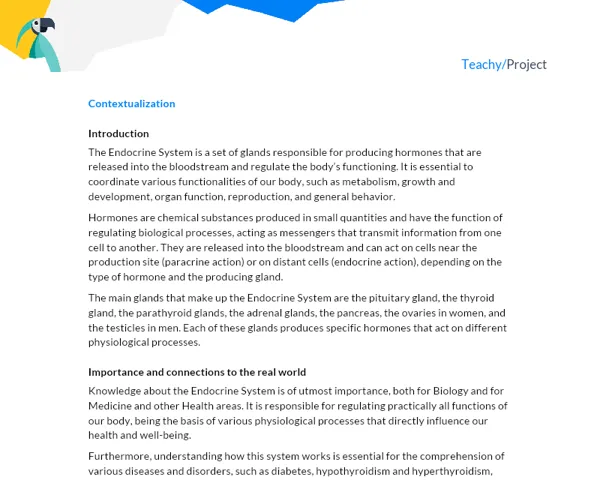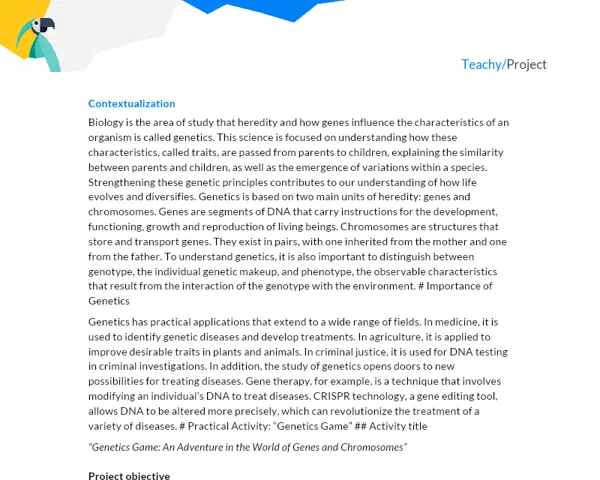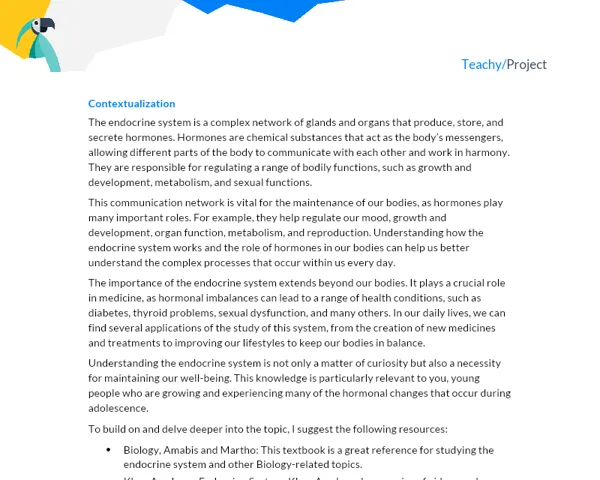Contextualization
Introduction
Welcome to the exploration of the intriguing world of fungi! This kingdom, often forgotten or simply associated with health problems or spoiled food, has a richness and dramatic importance for life on Earth that you probably never imagined.
Fungi, representing one of the five major branches of the tree of life, are incredibly diverse creatures and are among the most important organisms on our planet. With over 5 million estimated species, they play a crucial role in many ecological processes, such as organic matter decomposition and nutrient cycling, as well as in human well-being, providing food and medicines.
A striking and distinctive feature of fungi is their multicellular filamentous structure, called mycelium, formed by hyphae. Hyphae allow the fungus to efficiently spread through the substrate, maximizing nutrient absorption. Other characteristics include their mode of reproduction, both sexual and asexual, and their comprehensive geographical distribution, occurring from wet areas to deserts.
Contextualization
Although many people are not aware, fungi are deeply intertwined in human life. From the yeast used in bread and beer making, to the mold that gives the unique flavor to special cheeses, to Penicillium which is the basis of antibiotics, fungi are constantly around us, impacting our daily lives in various ways.
Furthermore, fungi play essential roles in the environment. They are the main decomposers in many ecosystems, responsible for nutrient recycling and organic material decomposition. Fungi can also form symbiotic relationships with plants, increasing nutrient absorption efficiency and enabling plant survival in different conditions.
Therefore, the study of fungi is fundamental to understand ecological dynamics and also our own world and daily lives. In this project, you will deepen your knowledge about these fascinating organisms, exploring their diversity, ecological and economic importance, and their multiple interactions with other living beings.
Consult the following sources to delve even further into the topic:
- Portal São Francisco - Fungi Kingdom
- Brasil Escola - General Characteristics of Fungi
- Sua Pesquisa - Fungi Kingdom
- Fiocruz - Fungi: a vast unknown with great diversity
- Toda Matéria - Fungi Kingdom
Practical Activity
Activity Title: "The Fascinating World of Fungi: A Multidisciplinary Exploration"
Project Objective:
The main objective of this activity is to stimulate students to investigate and understand the relevance and diversity of fungi, both in ecological and human contexts, as well as to develop practical skills in research, experimentation, teamwork, scientific writing, and presentation.
Project Description:
In this project, groups of 3 to 5 students will be tasked with studying fungi, conducting practical experiments, writing a report, and finally presenting their findings to the class. The activity will be divided into stages, and each stage must be completed before the next one begins. The total duration of the project will be approximately 3 weeks.
Required Materials:
- Books and online materials for research.
- Microscopy Kit (including slides and dyes).
- Fungi samples (can be purchased or collected in nature responsibly and with supervision).
- Ingredients for fermentation experiments (yeast, water, sugar, etc.).
- Materials for exhibition (paper, cardboard, printer, etc.)
Step-by-Step of the Practical Activity:
Stage 1: Research
In this first stage, the group will conduct in-depth research on fungi. Each group member will have a specific area to focus on: fungal morphology, life cycle, ecology, economic importance and human impact, and culinary and medical uses. Sources should be varied, including books, articles, and reliable websites.
Stage 2: Experiment
Here, groups will conduct practical experiments. Suggestions include:
- Observing and drawing various species of fungi under the microscope.
- Conducting fermentation experiments using yeast and different amounts of sugar and observing the differences in results.
Stage 3: Report
Groups will be responsible for writing a detailed report of their research and experiments. The report should include all the sections mentioned earlier (Introduction, Development, Conclusions, and Bibliography) and must comply with academic standards.
Stage 4: Presentation
Finally, groups will present their findings to the class. The presentation should be creative and engaging, and each group member should participate.
Project Deliverables:
-
Research Report: This document should include all the sections mentioned earlier. The development section should include the experiment results, while the conclusions section should contain the main insights obtained during the research and practical activity.
-
Presentation: Students should prepare a visual presentation that complements the report and clearly and creatively demonstrates the results of their research and experiments.



